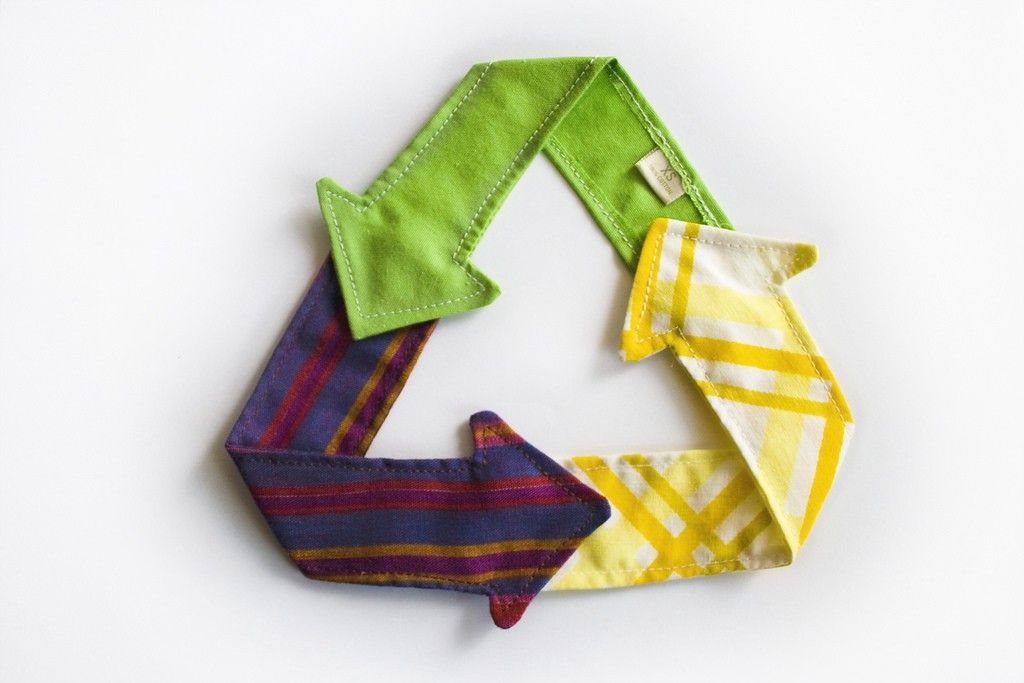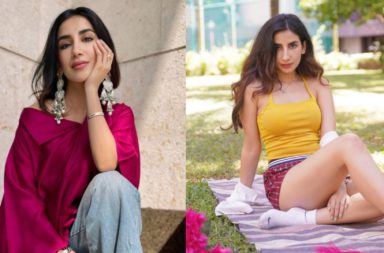We as humans have exploited the Earth in many ways. We have used resources to the point of exhaustion. Every year Earth Day is celebrated to create awareness about the deteriorating condition of our planet and how can we better it. Sustainable living is increasingly preached to reduce our footprint on Earth.
Fashion has been an inseparable part of our society. The last few decades witnessed the emergence of fast fashion, where trends change real quick and are replicated at retail stores which source their products from mass-producing factories in order to the reduce cost. This has shifted the dynamics of the clothing industry completely. Instead of durable long-lasting, we seek economic and trendy. This has become a vicious circle impacting the environment severely.

As a counter-movement, many environmentalists and experts from the fashion industry started the concept of sustainability in fashion. Sustainable fashion aims at creating classics that transcend the boundaries of short-lived trends. It aims at creating quality pieces that not only can be used for a long time to reduce waste but are also made in an environmentally conscious way.
Many creators and fashion enthusiasts have opted for sustainable fashion and are motivating others to do the same. They create awareness with regard to the harmful effects of fast fashion not just on the environment but on individuals as well. We have found 5 creators who are either wearing, promoting or making sustainable clothing options. All the roads may be different but the destination is the same- Sustainable fashion.
Also Read: Eid Fashion Frenzy: Get Ready To Slay With These Affordable Outfit Ideas!
Aja Barber
Aja Barber is surely on the top of our list when we speak about sustainable fashion. A pioneer in the intersectional feminist movement, Aja believes both sustainable fashion and intersectional feminism are complementary and supplementary to each other. As an intersectional feminist, you care about all things and unless you are not aware of who makes your clothes and in what conditions they make them, you cannot follow sustainable fashion.
Instead of blindly following trends, she speaks about finding your style and sticking to it. This can stop the unnecessary purchase of clothes that most often simply pile in the cupboard. Her Instagram is an honest and humorous account of her choices in fashion and life in general.
Siddharth Kerkar
Siddharth Kerkar is an artist, an influencer and an entrepreneur. He lives in Goa which is famous for its wild parties but equally known for its soothing beaches and artistic streets. Son to the famous Subodh Kerkar, Siddharth explored the power of social media to revive his father’s legacy who owns the Museum of Goa. He was exposed to art very early in life and understood it as a labour of love. When he saw fast fashion grappling the industry with its claws, he knew something was not right. Siddharth started a clothing line which offers sustainable clothing.
On his website, he calls his clothing line “ethically made.” His clothing is both ‘rebelling against fast fashion and a statement for sustainable fashion.’ Siddharth’s geographical location is one of the biggest inspirations behind his clothing range and you’ll see a bit of Goa in his clothes.
Aditi Mayer
Aditi Mayer is a sustainable fashion blogger, a model, a photojournalist and an activist. She extensively talks about social justice and environmental justice. She fights for labour rights and is very passionate about it. It was during the Rana Plaza Factory incident that she came face to face with the reality of fast fashion and the kind of plight these workers are subjected to.
Soon after, she started talking about the unethical treatment of labour and found an audience. Like upskilling in work is necessary to ensure growth, similarly, upcycling is important in fashion to re-wear clothing pieces. She believed a ‘waste is a waste only if wasted’ and therefore suggests reusing clothes to increase their life. Her ideas on sustainable fashion are well-researched and easily doable making sustainable fashion for all.
Scott Staniland and Brett Staniland
Scott and Brett are twin male fashion icons who speak about sustainability. They have appeared on many well-dressed lists and use their fame to create sustainable fashion a part of day-to-day life. These identical twins vouch for classic outfit choices to remain fashionable.
Scott heads the Green TV media content creation department, the leading media company in sustainability. Brett on the other hand is a PhD student. He was seen on the famous show ‘Love Island.’ On the show, he refused to wear fast fashion and created an awareness about its harm. As a result of his efforts, the show dropped its primary sponsor from the fast fashion industry and the contestants were seen wearing second-hand clothing. These brothers also strongly oppose wage theft and advocate ethical conditions for the workers working in the fashion industry.
Sally
Sally is popularly known by her Instagram handle ‘callmeaflowerchild’ which she keeps updating with her love for nature, beautiful landscapes and sustainable fashion. She advocates a mindful closet in which all pieces are used and do not simply exist.
Her idea of sustainable fashion is based on 2 pillars- one she aims to reduce wastage by not indulging in trends and low-quality pieces. Second, she encourages and popularises thrift stores to increase the life of outfits. On her Instagram account, Sally posts her daily outfit ideas famously called OOTD and shares about her latest thrift finds. While she is vocal about slow fashion, she does not shy away from calling out fast fashion.
It is important to understand that Earth today is in a very vulnerable position and if we do not act upon it now, it will get very late. Fashion is one industry where small individual acts of sustainability can be done and will have a huge impact. All you need to be is a little conscious. It is a myth that sustainable fashion is expensive. In reality sustainable fashion is not a single but a diverse way of life that includes ideas like capsule closets, thrift shopping, etc can be followed easily without increasing the stress on Earth’s resources.


